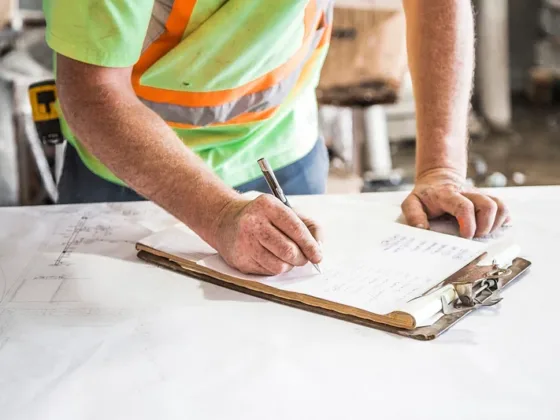Table of Contents Show
Removing a kitchen wall is a project that can save you time, money, and effort in the long run. It’s also a great way to add space to your home, especially if you’re planning on remodelling.

So if you’ve ever considered removing one of your kitchen walls but need help knowing where to begin, read on! We’ll walk you through step-by-step instructions for removing a split-level kitchen wall.
What Is a Split-Level Kitchen?
A split-level kitchen is a type of kitchen design where the cooking and preparation areas are on one level, and the dining and serving areas are on another.
It is typically separated by a step or a half-wall. This design allows for a clear separation between the functional and social areas of the kitchen. In addition, it can make the space feel more open and spacious.
Materials You Will Need to Remove a Split Kitchen Wall
To remove a split kitchen wall, you will likely need the following materials;
- Safety equipment (such as goggles, dust mask, and gloves)
- Demolition hammer or sledgehammer
- Pry bar
- Reciprocating saw or circular saw (for cutting through nails or screws)
- Drywall saw (for cutting through drywall)
- Metal cutting blade (for cutting through metal studs)
- Measuring tape
- Utility knife
- Level
- Chalk line
- Protective drop cloths or plastic sheeting
- Screwdriver
- Hammer
- Drill
How To Remove a Split-Level Kitchen Wall
Removing a split-level kitchen wall can be a complicated process. It should only be attempted by someone with experience in construction and renovation.
It is recommended to consult a general contractor to ensure that the wall you want to remove is not load-bearing and that your project is safe and up to code. Here is a general overview of the steps involved in removing a split-level kitchen wall:
Get Permissions and Permits
The first step is to obtain permission and the necessary permits from your local building department. This will ensure that your project complies with local building codes and regulations.
Determine The Load-Bearing Status of The Wall
To determine the load-bearing status of a wall, you must first understand what exactly a “load-bearing” wall is. A load-bearing wall supports either the floor above it or its own weight.
These walls are usually made of concrete or masonry. They can be identified by vertical columns in the middle of each room.
If your structure has such walls, they will need to be inspected before removal so that we can ensure their stability during construction work.
In some cases where there isn’t enough support underneath a partition wall to keep it from falling outwards, we may recommend adding additional support beams.
Protect The Floor
When removing a split-level kitchen wall, it’s essential to protect the floor to prevent damage to the underlying subfloor or joists. Here are some steps you can take to protect the floor during the removal process:
- Cover the floor with a thick layer of plastic sheeting. This will help to contain debris and protect the floor from scratches or other damage.
- Place drop cloths or tarps around the wall to catch any debris that may fall during the removal.
- Be careful when using tools such as a sledgehammer or crowbar to remove the wall. These tools can cause damage to the floor if not used properly.
Build A Temporary Wall
Suppose the wall that you wish to remove is load-bearing. In that case, building a temporary wall to support the structure will be necessary before you remove the original wall.
This will ensure that the building does not collapse during the removal process. However, removing a load-bearing wall without professional help can be dangerous and may cause structural damage to the home.
So, it is best to hire a professional contractor with experience in structural work.
Remove The Drywall
Removing the drywall. Before removing the wall’s framing, you must remove all the drywall from both sides. This can be done with a hammer and chisel or an electric saw if you have one.
Be sure to wear protective equipment like gloves, goggles, and ear protection, so you don’t cut yourself or damage your hearing.
Remove The Wall’s Framing
The first step in removing the wall framing is to remove the drywall. This can be done using a pry bar, hammer, chisel, or screwdriver. Ensure you wear proper safety gear like goggles, overalls, and gloves. Here are the steps to remove the framing:
- Locate and mark any electrical or plumbing lines running through the wall. Turn off the power or water to these lines before proceeding.
- Use a utility knife or drywall saw to cut through any drywall or plaster on the wall. Carefully remove the drywall or plaster, being mindful not to damage the framing or the floor.
- Use a reciprocating saw or handsaw to cut through the wall’s framing. Start at the top of the wall and work your way down.
- Carefully remove the framing pieces by prying them loose with a pry bar or crowbar. Be mindful of any nails or screws holding the framing, and remove them as necessary.
- Carefully remove any insulation in the wall and dispose of it properly.
- Once the framing is removed, inspect the area for any damage and make any necessary repairs before proceeding with any new construction or remodelling.
Install A Steel Structural Beam
The last step is to install a steel structural beam, which will serve as the primary support after the kitchen wall removal. After that, the next step is to inspect the beam with a structural engineer to ensure it has been installed correctly and meets all local building codes and regulations.
Once the inspection has been done and the beam is approved, The temporary supports can be removed, and the beam can be permanently secured.
After that, you can finish the walls and flooring as necessary. This may include installing drywall, plaster, paint, or other materials to cover the beam and blend with the surrounding area.
Conclusion
We hope this article has helped you understand the steps involved in removing a split-level kitchen wall. However, it should be noted that there are many factors to consider when removing a wall, such as load-bearing status and other structural connections.









